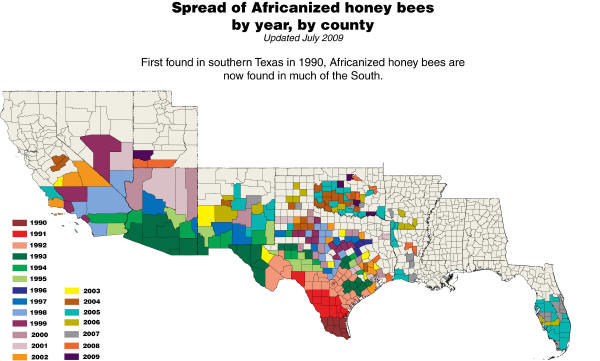|
|||
|
|
|||
Africanized Honey Bees |
|||
| The first introduction of the Africanized Honey Bee into the U.S.
occurred in the fall of 1990 in south Texas. This bee, a hybrid from
the African honey bee queens that originally escaped from a researcher
in Brazil in 1957, had been moving northward slowly for several years
as the bees swarmed and absconded. Africanized Honey Bees (AHB) will
reflect these behavioral traits more often and more readily than the
European Honey Bee (EHB). Texas Apiary Inspection had an aggressive
approach to monitoring and regulating commercial honey bee movement in
an attempt to slow the spread of AHB in the state. Natural migration
of the bees proceeded until by August of 2006, AHB had been detected
in 163 of the 254 counties in Texas. The most important thing people need to realize is the fact that the AHB is just a slightly different honey bee. AHB looks the same, only being microscopically smaller than the EHB. The venom is the same. The behavior can differ. Habits of AHB
What Can Cause AHB Reactions
Prevent Stinging Incidents
What to do if Attacked
A –
Alert others in the area
|
|||
|
 |
|
|
|
|

